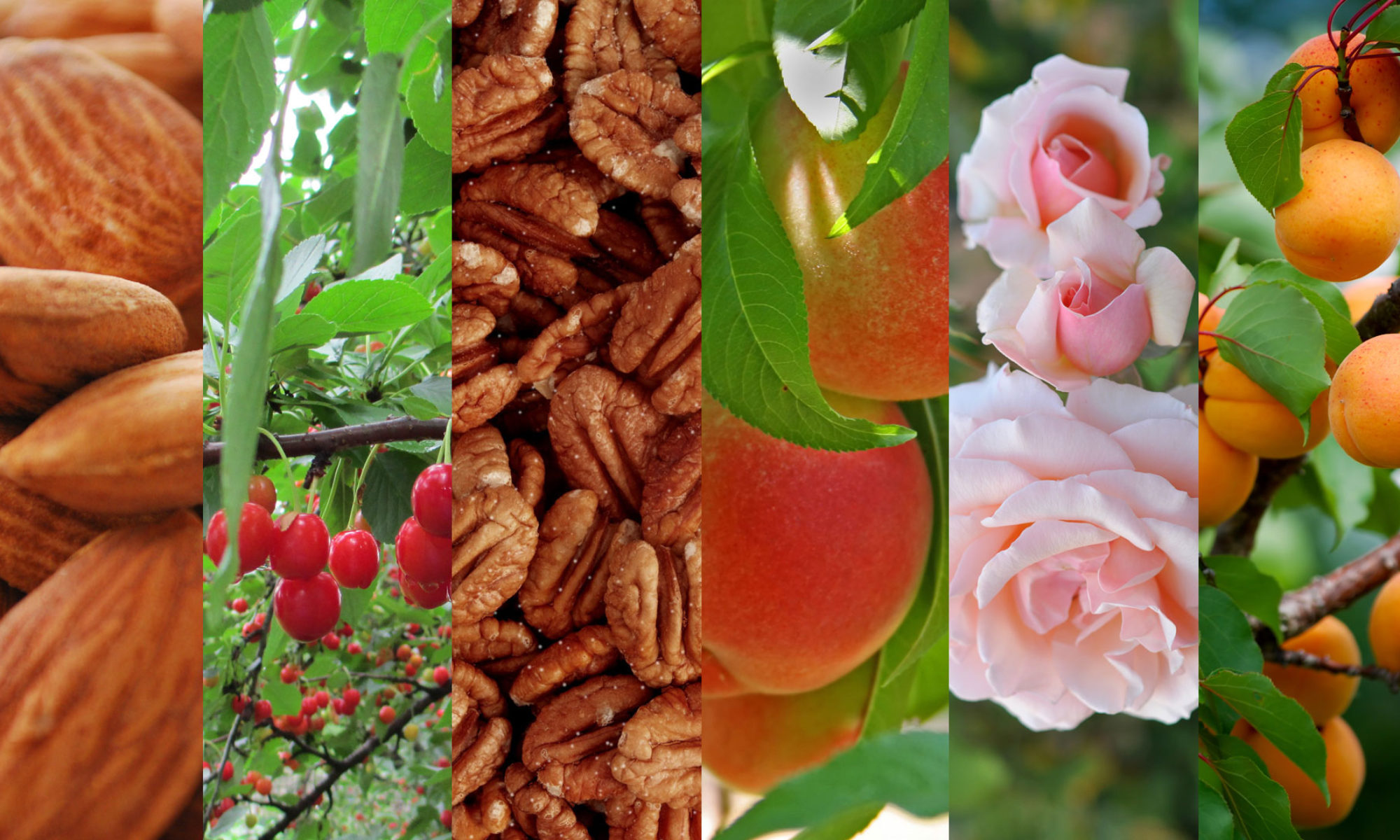Crown gall disease, caused by the soil bacterium Agrobacterium tumefaciens, remains a pathogen of considerable economic importance (Kennedy and Alcorn, 1980). It is responsible for nursery and field losses amoung a wide variety of plants including stone-fruit trees (Alconero, 1980), apple and pear trees, grape vines (Perry and Kado, 1982), and ornamentals (Bazzi and Rosciglione, 1982). The disease is widely distributed in temperate countries and both pathogenic and non-pathogenic A. tumefaciens strains can be readily isolated from soil.

Grapevine vineyard devastated with crown gall (photo G. Bullard)
Pathogenic A. tumefaciens enters roots or stems near the soil line through recent wounds. Plant tissue damage can be caused by agricultural and propagation practices, grafting, budding, winter damage, or insects. Once the bacterium invades, it multiplies in the extracellular space. Following transformation, whorls of proliferating neoplastic cells appear in the cortex or in the cambial layer of the plant, depending on the depth of the wound. These neoplastic plant cells, which may be multinucleated, divide rapidly and exhibit the features of anaplasia. In general, a tumour or gall becomes grossly visible by 10-14 days after infection of the wound.
As the tumour continues its growth, its centre may be free of bacteria. However, A. tumefaciens can be found in its periphery. Although tracheids or vessels develop to some extent within the tumour, there is little orientation or connection between these and the vascular system of the host plant. Growth of the tumour eventually exerts pressure on normal tissue and can crush xylem vessels, thus compromising flow of water to the upper parts of the plants.
Both loss of yield involving reduced fruit size and number and stunting of growth may occur when seedlings or young cuttings are infected in the early stages of plant growth. The lack of vigour, reduction in foliage, and water stress are associated with chronically diseased root systems. When more mature tree crops become infected, secondary growths will appear from the root systems near the trunk. These “suckers” are a good sign that the root system is infected.
The highest losses from crown gall occur in young plants, i.e. those still in the nursery. The disease seldom kills plants, but it can elicit lack of vigour and reduced growth. Crown gall is considered to be the main bacterial disease of stone fruit trees in the nurseries of Mediterranean countries (Krimi et al., 2002). In Canada, losses in nursery stock of fruit and ornamental plants were approximately $112 million in 1986, which equals about 10% of the nursery plant material (Carter, 1989).
Diseased crops may be poorly productive and exhibit a marked dwarfing as observed in almond (Flint, 2002). Kennedy and Alcorn (1980) estimated that damage caused by crown gall in fruit and nut trees in California alone totalled US $23 million dollars in 1976. Sobiczewski et al. (1991) reported that in water deficiency conditions, one-year-old shoots of crown galled mazard cherries were 50% shorter and the crown diameter was 25% smaller than in healthy plants. Kerr (2015) reported that based on the value of stone fruits in Australia (more than $1 billion), it is estimated that biocontrol of crown gall probably contributes $100,000,000 annually to the Australian economy largely through the protection of almond trees but also of peach, nectarine, cherry trees etc. and of other plants such as roses.
References:
Alconero R. 1980 Crown gall of peaches from Maryland, South Carolina, and Tennessee and problems with biological control. Plant Disease 64: 835-838
Bazzi C., Rosciglione B., 1982 Agrobacterium tumefaciens biovar 3, causal agent of crown gall on Chrysanthemum in Italy. Phytopathology 103: 280-284
Carter, A., 1989 Decision Document: Order – Eubacteriales family – Enterobacteriaceae Agrobacterium radiobacter. http://www.hc-sc.gc.ca/cps-spc/pubs/pest/_decisions/e89-02/index-eng.php
Flint M.L., 2002 Integrated Pest Management for Almonds. 2nd Ed. University of California, Statewide Integrated Pest Management Project, Division of Agriculture and Natural Resources, Oakland, CA, USA
Kennedy B.W., Alcorn S.M., 1980 Estimates of U.S. crop losses to prokaryote plant pathogens. Plant Disease 64: 674-676
Kerr, A. 2016 Biological control of Crown Gall Australasian Plant Pathology 45(1): 15-18
Krimi Z., Petit A., Mougel C., Dessaux Y., Nesme X., 2002 Seasonal fluctuations and long-term persistence of pathogenic populations of Agrobacterium spp. in soils. Applied and Environmental Microbiology 68: 3358-3365
Perry, K.L., and Kado, C.I. 1982 Characteristics of Ti plasmids from broad-host-range and ecologically specific biotype 2 and 3 strains of Agrobacterium tumefaciens. J. Bacteriol 151: 343-350
Sobiczewski P., Karczewski J., Berczynski S., 1991 Biological control of crown gall Agrobacterium tumefaciens in Poland. Fruit Science Report 18: 125-132

